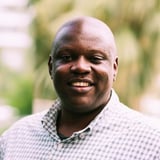Summary
Netflix's documentary "The Social Dilemma" shined a harsh spotlight on how design patterns and advertising targeting developed to encourage engagement and tailor content to users' preferences have dangerous, far-reaching consequences. We will discuss: What role can researchers play in mitigating negative social and personal impacts during the design process? If we discover evidence that a design solution to a business goal negatively impacts customers' lives, how might we help our design and product partners consider a different solution? What is the responsibility of researchers to determine how products we've already launched affect our customers' lives?
Key Insights
-
•
Algorithms designed to simplify decisions can inadvertently perpetuate biases and unfair outcomes, such as racial bias in healthcare and inappropriate criminal sentencing.
-
•
Misinformation spreads farther and faster than truth on social media, significantly impacting family relationships and societal trust.
-
•
Infinite scroll exploits behavioral addiction by triggering dopamine responses through continuous rewards, mirroring cycles of substance addiction.
-
•
Remote and unmoderated research reduces observer bias and captures more authentic user behavior compared to traditional lab studies.
-
•
Diverse research participant recruitment is vital to ensure products serve a wide range of real-world needs and perspectives.
-
•
Combining qualitative and quantitative research methods allows better prediction and observation of product impacts at scale and in context.
-
•
Digital nudges can reduce addictive social media use by requiring deliberate user actions and promoting mindfulness.
-
•
Current industry success metrics, like time-on-site and page views, often incentivize addictive behaviors rather than user well-being.
-
•
Researchers have a responsibility to advocate for new success metrics that prioritize user health, happiness, and community.
-
•
Including marginalized and diverse perspectives in research teams helps identify and mitigate internal biases in product design.
Notable Quotes
"The people we’ve lost are not intelligent, gullible, or willfully ignorant. They’re victims of how design and technology amplify misinformation."
"Algorithms help us find what we want quickly, but when used in criminal sentencing or healthcare, they can produce unfair and biased results."
"Infinite scroll is behavioral cocaine sprinkled all over our interfaces, triggering dopamine hits that keep us endlessly scrolling."
"False information spreads significantly farther, faster, deeper, and more broadly than the truth, often by an order of magnitude."
"Remote research lets us observe how people really use products in their own environments, mitigating the hawk-orn effect."
"We need to rethink business metrics that reward addiction and instead measure the quality and meaning of user interactions."
"Digital nudges invite users to be more mindful by pausing autoplay and requiring actions to reveal notifications, reducing addiction."
"Researchers should seek out people who don’t look like us or think like us to check our biases before they shape products."
"We can’t stop technology development, but we must understand the immense responsibility of unleashing new technology into society."
"Let’s use algorithms to promote sources with scientific integrity and create design patterns that enrich people’s lives."
Or choose a question:
















More Videos

"Research operations is the spine of any successful research and insights group."
Nalini KotamrajuResearch After UX
March 25, 2024

"If you want to go fast, go alone; if you want to go far, go together."
Dean BroadleyNot Black Enough to be White
January 8, 2024

"When we start changing our behavior, we start changing the voices and behavior around us."
Denise Jacobs Nancy Douyon Renee Reid Lisa WelchmanInteractive Keynote: Social Change by Design
January 8, 2024

"Our team’s improvement wasn’t the final state—we set ambitious goals to be in the 80th to 90th percentile next year."
Kim Fellman CohenMeasuring the Designer Experience
October 23, 2019

"Design helps build capital and seek comfort, which draws in the most powerful."
George AyeThat Quiet Little Voice: When Design and Ethics Collide
November 16, 2022

"Visual style isn’t just enough to make something feel cohesive."
Nathan CurtisBeyond the Toolkit: Spreading a System Across People & Products
June 9, 2016

"We are building cross-product research capabilities to curate a holistic understanding of agents across all workflows and touchpoints."
Greg PetroffThe Compass Mission
March 10, 2021

"Remote research methods can cast a wider net, but some briefs still require on-the-ground presence."
Chloe Amos-EdkinsA Cultural Approach: Research in the Context of Glocalisation
March 27, 2023

"The new site had a 19% dropout rate compared to 32% on the old site, showing clear improvement."
Mackenzie Cockram Sara Branco Cunha Ian FranklinIntegrating Qualitative and Quantitative Research from Discovery to Live
December 16, 2022
Latest Books All books
Dig deeper with the Rosenbot
How do newer generations of law students view the incorporation of UX principles into legal education?
What practical practices can make accessibility a sustainable part of daily design and development workflows?
What role do personal financial and family pressures play in deciding to leave or return to tech?
















